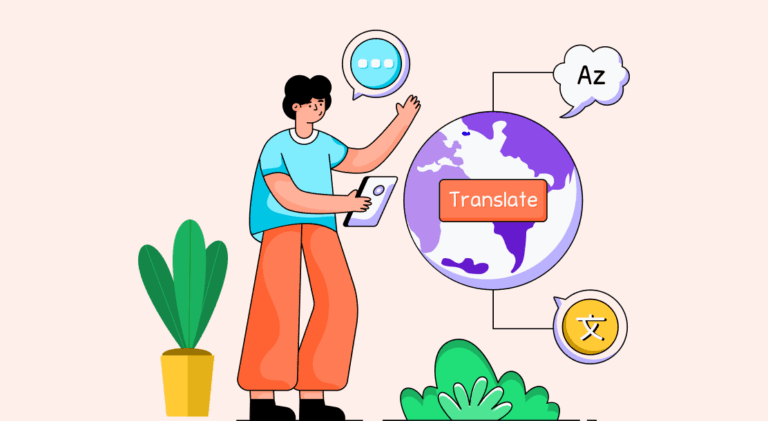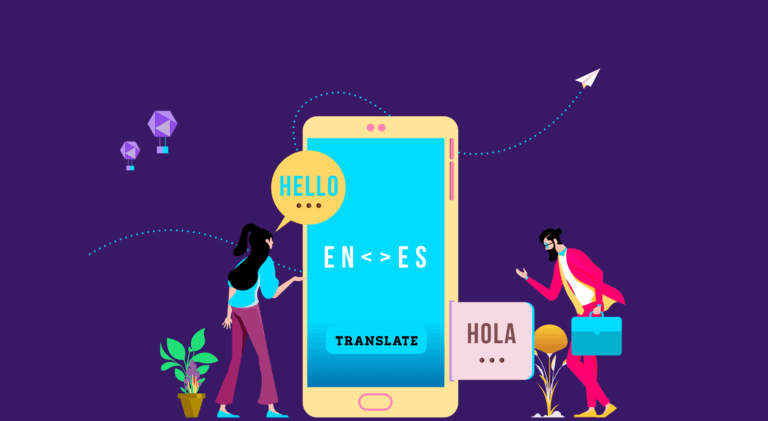
Table of Contents
- Top 10 Translation Industry Trends for 2022
- Key Takeaways
- Conclusion
- FAQs
2020 was not exactly a great year for the translation sector or for a majority of industries for that matter. However, that led to translation industry trends getting an all-new makeover in 2021 and are going strong in 2022, with an increasing demand for translation services across various markets. With the world adapting to the new normal owing to the pandemic, the need for translation services has grown significantly in the past few months. So, let’s give you some translation trends that will help boost your career.

Top 10 Translation Industry Trends for 2022
While technological advancement has made machines and software immensely capable of doing the job of a human translator, the need for human translators cannot be absolutely done with. Translation technology is improving at a fast speed, but in several cases, the accuracy of a human translator and the touch of the cultural context, cannot be replicated by technology.

That said, human translators would highly benefit if they had to specialize in a particular field under the translation niche as that would add immense value to the service they provide in the future. Let’s take a look at some of the emerging translation industry trends.
1. e-learning
e-learning emerged as a necessity for facilitating education worldwide due to the pandemic. Simultaneously, it opened the option of learning anything from anywhere in the world, without having to be physically present in that particular location.
With the added advantages of easy accessibility and convenience, e-learning is one of the translation industry trends that will not just grow throughout 2022 but will also last for a long time. Companies today are actively hiring translators to translate their training material into different languages to make it more accessible for people across the globe.
2. Growth of languages
Languages are growing fast and so is the need for it. This has led to people showing more interest in learning and mastering other languages. The number of non-native Portuguese, Arabic, Chinese, Spanish, French, and Hindi speakers is increasing each day. The rapid growth of several languages is likely to multiply substantially in the coming years.
3. Media localization
Films, videos, radio shows in any language are not just consumed by the native speakers of that language. The rise of several online platforms and the plethora of content on them in the form of shows, web series, etc, has led to the need for accurate translations of them from the source language to other languages. The collective hunger for audiovisual content across the globe is high and this is one of the major translation industry trends, that will rise this year and in the future.
4. Medical translation
This translation trend was born out of the pandemic and the need to communicate better so that scientific and medical research could be conducted using the knowledge of experts around the world.

Sharing medical information back and forth is necessary for healthcare officials, practitioners as well as government authorities, and having language accuracy is crucial in these matters, which is why is such an important translation trend in 2022.
5. Translation in business
With companies having restructured their delivery systems, communication methods, and ways of conducting business, to adapt better to the online mode, businesses now are focused on a global service model. There’s a constant need for video calls around the world, marketing material, and product guides, and all of these need to be translated into other languages.
6. Collaboration
With the availability and increasing use of collaborative tools like Skype calls, video chats, kanban boards, etc., one of the translation industry trends on the rise is the need for linguists to help facilitate the use of these tools. This is essential for managing projects, providing better customer service, and easier collaborations.
7. Speech translation
Speech translation is imperative for translators and interpreters to do their job well. It’s also of immense value to developers. Speech-to-text and speech-to-speech translations are two areas of great interest in the translation industry.

8. Post-editing
Machine translation post-editing (MTPE) is one of the services that will be highly required in 2022. MTPE is a collaborative effort between a machine and a human translator to provide fast, effective, and accurate translations.
9. Remote working
Work from home is one of the rising trends today. This has led to the increase in the need for live translators, language interpreters, and remote interpreters. This digital shift has placed a massive emphasis on the need for communicating better with people worldwide.
10. Artificial intelligence
AI is considered as one of the highly anticipated translation trends in 2022 and its integration with the translation development process is something to look forward to. Though this has been around for a while, 2022 will see more widespread adoption of this technology in a lot of industries compared to the previous years. Be prepared to see many companies looking for translation management systems with machine learning built in.

Key Takeaways
- Though there have been serious technological advancements in translation machines and software, the need for human translators cannot be done with.
- With the added advantages of easy accessibility and convenience, e-learning is a translation trend that will not just grow this year but also stay.
- There is a rapid growth of several languages like Portuguese, Arabic, Chinese, Spanish, French, and Hindi is likely in 2022 and the years ahead.
- The rise of several online platforms and the content on them has led to the need for accurate translations from the source language to other languages.
- Businesses need video calls, marketing material, and product guides to be translated into other languages.
- MTPE is a collaborative effort between a machine and a human translator to provide fast, effective, and accurate translations.
Conclusion
Globalization, digitization, and the pandemic, of course, have made it possible for people to conduct business across the globe, right from the comfort of their living rooms. And to communicate better and more effectively with people from different countries, it is important to hire translators and be well aware of the top translation industry trends. Today, translation has become one of the non-negotiable aspects of modern business.
FAQs
Some of the top translation opportunities are available in the following niches-
– Literary translations
– Localizers
– Sign language interpreters
– Trilingual interpretation
– Medical interpreters
– Conference interpretation
– Legal or judicial translators
To become a qualified translator, it’s essential to have a minimum of a bachelor’s degree in your chosen language. A good understanding of the grammar, syntax, structure, specialized terminology of the language as well as its cultural roots, is important to be a translator.
Some of the essential skills required to become a translator include writing skills, strong communication skills, cultural knowledge, research skills, active listening, basic know-how of computer-assisted translation (CAT), and fluency in at least two languages.
Currently, Mandarin pays the most in the translation industry, while English, Spanish, German, Russian, and French are some of the languages that are in high demand.
Literary translators are the highest-earning type of translators. Their average income is approximately $51,000 a year. The reason for literary translators being paid well is because literature is considered to be one of the toughest content types under translation services.
Latest Blogs
Learn how to rank on AI search engines like ChatGPT, Perplexity, and Gemini by optimizing your content for authority, structure, and relevance. Stay ahead in AI-driven search with this strategic guide.
Explore the best healthcare SEO services for your medical practice. Improve online visibility and effectively reach more patients in need of your services.
Discover top social media agencies specializing in banking solutions, enhancing financial services and driving engagement.
Get your hands on the latest news!
Similar Posts

Translation
5 mins read
All You Need to Know About Language Translation and Terminology Management

Translation
5 mins read
6 Reasons to Translate Content into German

Translation
5 mins read